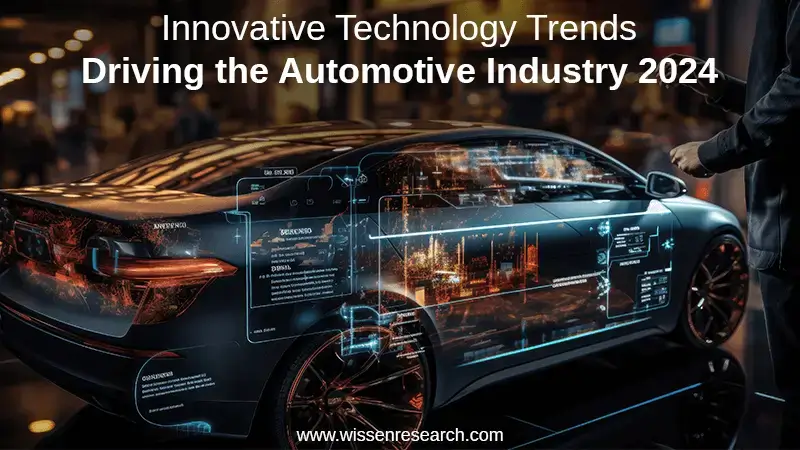Subscribe our newsletter
Please Subscribe our news letter and get update.

“It’s a never-ending battle of making your cars better and trying to be better yourself.” Dale Earnhardt
A lot is helping in the automobile industry in 2024, and keeping up with innovative technology trends can sometimes become a daunting task. Fret not! Our post about innovative technology trends in the automobile industry has you covered.
The automobile industry is adopting new technologies to meet customers’ comfort needs, enhance safety, and improve performance and energy efficiency. While electric vehicles (EVs) and autonomous driving technologies receive significant attention, they represent only a fraction of the innovations in the automotive industry.
Let’s delve deep into the topic and explore trending technologies that have the potential to revolutionize the automotive industry.
Vehicle-to-everything (V2X) is an advanced communication technology that significantly increases road safety, reduces accidents, and provides advanced driver assistance. The innovative technology assists in creating an ecosystem that empowers vehicles to communicate with other vehicles and entities like infrastructure, devices, power grids, etc.
The term V2X contains the following subcategories:
In 2024 and beyond, V2X technology will play a crucial role in creating a connected ecosystem where vehicles can communicate with each other and their surroundings, leading to safer, more efficient, and intelligent transportation systems in the automotive industry.
Augment reality (AR) is a revolutionary technology widely used in diverse business domains, and the automotive industry is no exception. Ferrari’s patent application, published by the United States Patent and Trademark Office (USPTO), provides a clear understanding of how augmented reality (AR) can enhance the driving experience to a whole new level.
AR display integrated into a helmet goes beyond speed and RPM indicators, pushing the boundaries of driver engagement with the vehicles on and off track.
3D printing is one of the innovative trends in the automobile industry that will revolutionize the auto part manufacturing process. Rapid prototyping speeds up the design and testing process for new vehicles, custom parts, and toolings.
On-demand part 3D printing to vehicle manufacturing and prototyping are just a few use cases of 3D technology in the automobile industry. In the upcoming years, new possibilities will surface that will broaden the application scope of 3D technologies in the automobile domain.
Read More: 3D Printing in Dental Industry
While electric vehicles have become the buzzword globally, most tech experts advocate that hydrogen-powered vehicles are the future. And recent developments by the key players in the automobile industry suggest the same.
Numerous patents are being filed for vehicles from four-wheelers to two-wheelers, clearly indicating that hydrogen fuel cell technology is the future of the automobile industry.
The Internet of Things (IoT) is one of the most disruptive technology trends shaping the future of the automobile industry. The technology will play a key role in creating an ecosystem that enables vehicles, sensors, and devices to communicate with each other.
In smart cities, the IoT will improve vehicle and infrastructure communication to enhance safety, reduce traffic congestion, resolve car parking issues, and reduce pollution. In the upcoming future, automobile companies will invest in sensing technologies like LiDAR that collect data in real time and enable vehicles to better engage with and understand their surroundings.
LiDAR technology is playing a pivotal role in the Advanced Driver Assistance System (ADAS) and revolutionizing how we drive. Furthermore, LiDAR’s ability to create 3D maps of the surrounding environment accelerates the journey towards fully accelerated vehicles, particularly in Level 3 and beyond.
Lidar is an emerging technology in the automotive industry. It empowers vehicles to operate autonomously without human intervention, unlocking new ADAS possibilities. Advanced sensors, 3D maps of the surrounding environment, and real-time data sharing, combined with unparalleled precision in decision-making, will ensure a safer, more efficient, and more enjoyable driving experience.
These ground-breaking technologies are transforming and shaping the future of the automobile industry. It’s exciting to see how technologies like V2X, AR, IoT, 3D printing, LiDAR, etc., will change the industry and impact our lives. As new technologies keep making their way into the industry, we will update our posts about fascinating breakthroughs that will transform the way we think about transportation and mobility.